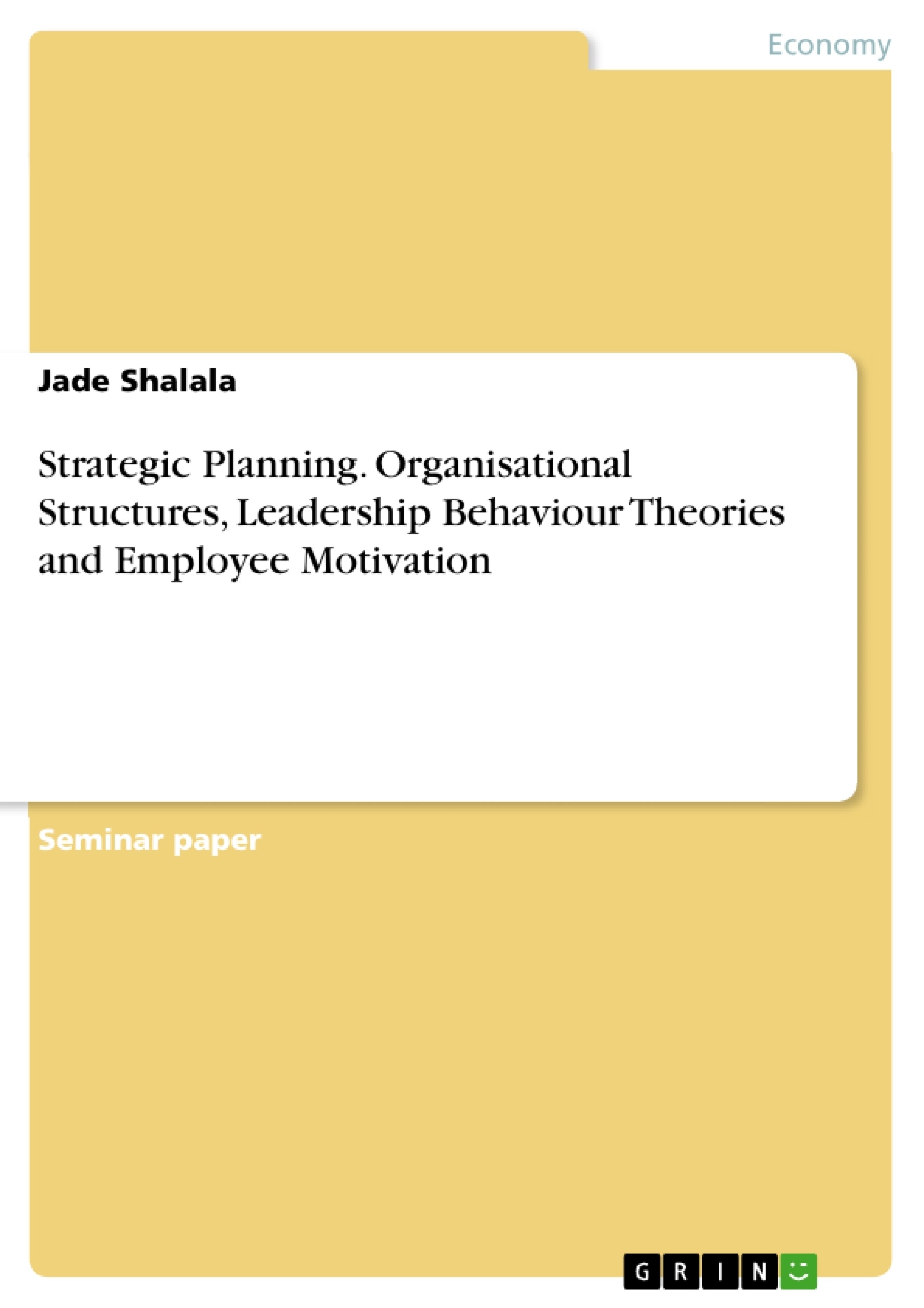This paper covers the essential strategic planning criteria. First, the author analyses the characteristics of different organisational structures. Then, the evaluation of different leadership behaviour theories and the evaluation of how the Investec Bank motivates its employees will be examined.
A multifunctional structure is made up of centralised control- hierarchical- and contains separate functional departments. Vertical integration is part of this structure and brings together the operations of the different functional departments – e.g. manufacture and assembly, purchasing resources, retailing as well as distributing. This structure is mainly used for small companies and creates specialisation along functional lines. It is a viable structure as long as the products share common manufacture procedures and technologies and personnel can become highly specialised in their work.
However, multifunctional structure is not optimal if the company is developing and makes use of multiple technologies to produce larger product ranges, is moving into new markets and needs to respond to market needs or the firm decides to diversify. Thus multifunctional structure is only valid for small, simple organisations that specialise in their product. For example, General Motors, a car manufacturer, built itself on centralised control over a functionally divisionalised structure and specialised as one of the best car manufacturers.
Inhaltsverzeichnis (Table of Contents)
- Task 1: Analysis of the characteristics of different organisational structures
- Multifunctional structures
- Multidivisional structures
- Matrix structures
- Network structures and virtual organisations
- TASK 2: Evaluation of different leadership behaviour theories:
- TASK 3: Evaluation of how Investec Bank motivates its employees:
Zielsetzung und Themenschwerpunkte (Objectives and Key Themes)
This assignment examines the characteristics of different organizational structures, explores various leadership behavior theories, and analyzes how Investec Bank motivates its employees.
- Organizational structure and its impact on efficiency and effectiveness
- Different types of organizational structures, including multifunctional, multidivisional, matrix, and network structures
- Leadership behavior theories and their influence on employee motivation and performance
- Employee motivation strategies and their application in a banking context
Zusammenfassung der Kapitel (Chapter Summaries)
Task 1: Analysis of the characteristics of different organisational structures
This section examines the key characteristics of four organizational structures: multifunctional, multidivisional, matrix, and network structures. It discusses the advantages and disadvantages of each structure, providing real-world examples to illustrate their application. The chapter concludes by comparing the structures and considering the circumstances under which each might be most appropriate.
Schlüsselwörter (Keywords)
Organizational structure, multifunctional structure, multidivisional structure, matrix structure, network structure, leadership behavior theories, employee motivation, Investec Bank.
- Quote paper
- Jade Shalala (Author), 2018, Strategic Planning. Organisational Structures, Leadership Behaviour Theories and Employee Motivation, Munich, GRIN Verlag, https://www.grin.com/document/909632



